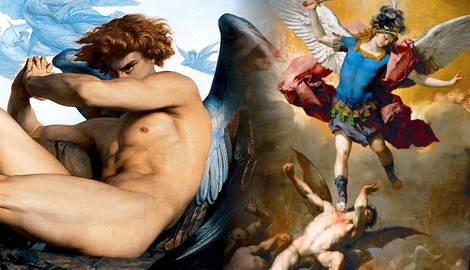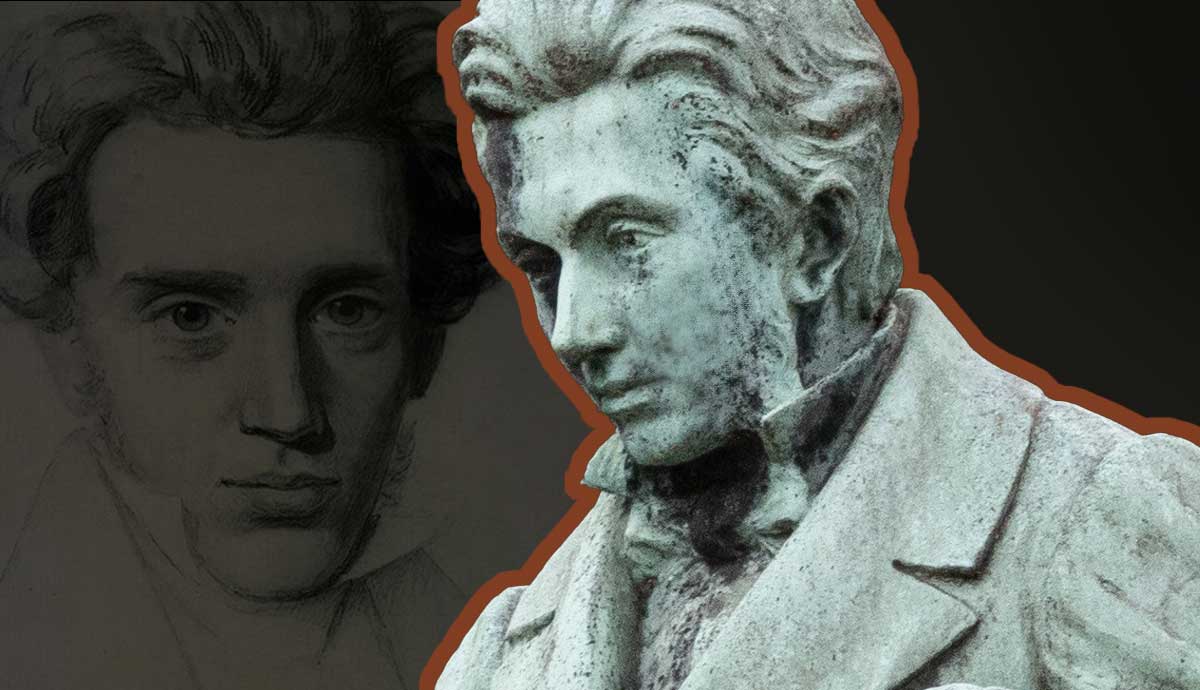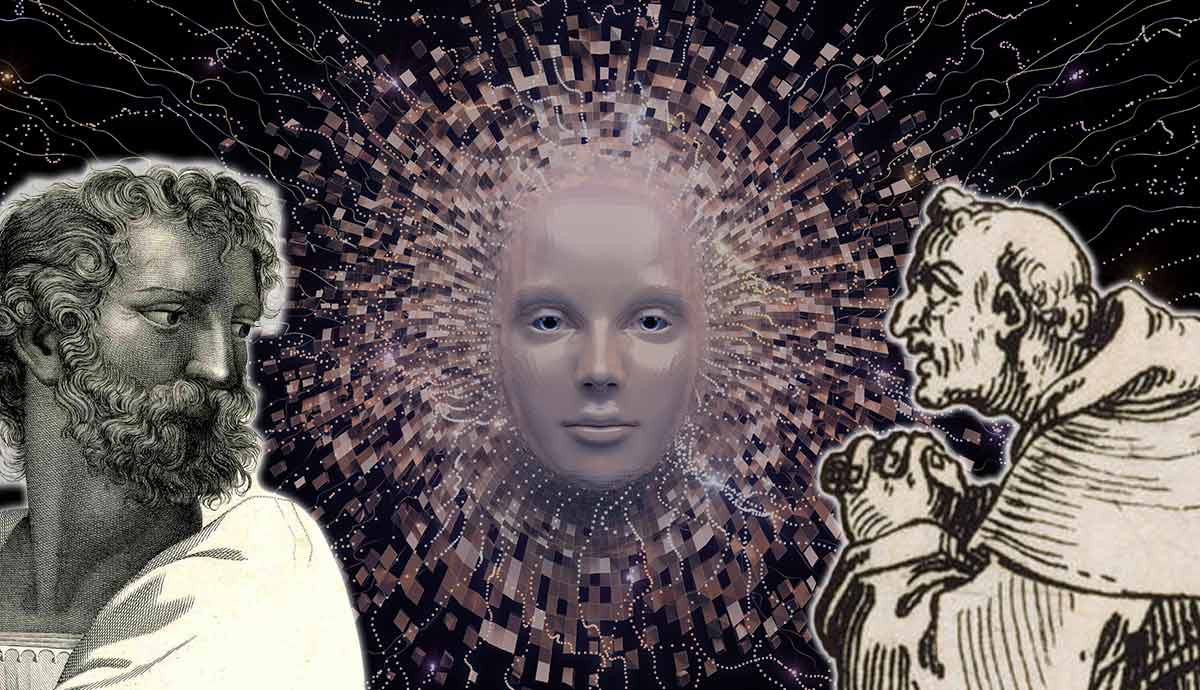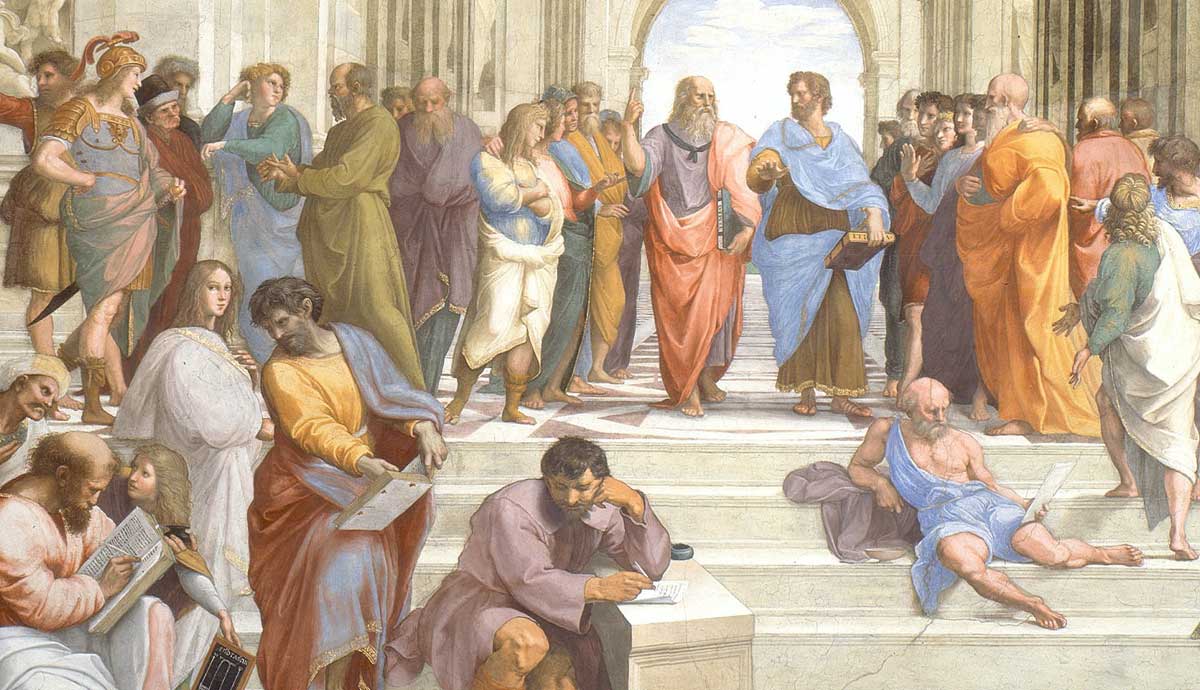
summary
- Origins: The Book of Enoch, a pseudepigraphal work attributed to Enoch, father of Methuselah, was probably compiled around 200 BCE.
- Contents: The book details how God sent the Watchers, a group of Angels, to help mankind, but they were a corrupting influence.
- Influence: The book was influential among early Church Fathers, but it was lost by the 5th century CE when it was no longer considered canonical.
- Rediscovery: It was only rediscovered in 1773 and was also discovered among the Dead Sea Scrolls in the 1950s.
The Book of Enoch makes for interesting reading. This pseudoepigraphal work was widely read and accepted by the early Church Fathers, but by the 5th century, it was lost and no longer considered biblical canon by most Christian groups. This changed the interpretation of key biblical texts. But what is the Book of Enoch, what does it say, and why is it important? Discover the Book of Enoch with eight essential facts.
1. The Book of Enoch? Which one?

There are three different books attributed to Enoch, and each is sometimes referred to as the Book of Enoch. The work most known as the Book of Enoch should rather be called 1 Enoch. It is a compilation of five other works: The Book of the Watchers, The Similitudes of Enoch, The Astronomical Book, The Book of Dreams, and The Epistle of Enoch. Although some of the sections are earlier works, the compilation date of the book is approximately 200 BCE.
2 Enoch, also known as The Book of the Secrets of Enoch, is a shorter retelling of the basic story of 1 Enoch. It does, however, have some unique content as well. The author wrote this version of the book of Enoch between the 1st century BCE and the 3rd century CE. The language of the original version of 2 Enoch is unknown. The only surviving full versions of the text were written in Slavonic and dated to the 14th century and later. For this reason, it is also called the Slavonic Enoch.
3 Enoch, variously known as The Hebrew Book of Enoch, The Book of the Palaces, The Book of Rabbi Ishmael, and The Revelation of Metatron, was written in Hebrew. It is dated to the 5th century CE, although it claims to be the work of Rabbi Ishmael, who lived in the 2nd century. 3 Enoch is associated with Merkabah mysticism, which in turn is based on the throne vision of Ezekiel 1-3. A prominent theme in this book is Enoch’s ascension into heaven and his transformation into the angel Metatron.
2. The Book of Enoch is a Pseudepigrapha

The term pseudepigrapha refers to a book that claims to be autobiographical but was not written by the figure identified as the author. Pseudepigrapha were common from 400 BCE to 200 CE. Authors attributed their works to famous characters from the Bible or from history to give them more weight and credibility. Other examples of Old Testament pseudepigrapha from the same period include the Testament of Job, the Apocalypse of Baruch, and 4 Ezra, among many others.
In the case of the Book of Enoch, the author attempted to attribute the book to Enoch, the father of Methuselah, referenced in Genesis 5. This enigmatic character, Enoch, ascended to heaven without having died. The Bible provides little detail about Enoch, but what it does offer is the ideal material to create a backstory around.
3. The New Testament Quoted the Book of Enoch

The Book of Enoch is both quoted and alluded to in the New Testament. First, it is alluded to in 2 Peter 2:4. Secondly, the book of James quotes the Book of Enoch verbatim. 1 Enoch 1:9 reads:
“Behold, he comes with the myriads of his holy ones, to execute judgment on all, and to destroy all the wicked, and to convict all flesh for all the wicked deeds that they have done, and the proud and hard words that wicked sinners spoke against him.”
Jude 14 and 15 read:
“It was also about these that Enoch, in the seventh generation from Adam, prophesied, saying, “See, the Lord is coming with ten thousands of his holy ones, to execute judgment on all, and to convict everyone of all the deeds of ungodliness that they have committed in such an ungodly way, and of all the harsh things that ungodly sinners have spoken against him.”
Allowing for variations in translation, James 14-15 quotes 1 Enoch 1:9 verbatim. The fact that the New Testament quotes from the Book of Enoch does not elevate it to canonical status. Several other books mentioned in the Bible are also not included in the canon. Such examples are the Book of the Wars of the Lord (Numbers 21:14), The Book of Jashar (Joshua 10:13), The Book of the Acts of Solomon (1 Kings 11:41), The Book of Annals (Nehemia 12:23), and The Book of the Chronicles of the Kings of Media and Persia (Esther 10:2).
4. Book of Enoch Summary: Angels & Watchers

According to The Book of Enoch (1 Enoch), God sent 200 angels, called watchers (“Irin” in Aramaic and “Egregoroi” in Greek), to serve as guardians, guides, or instructors. The Watchers were supposed to guide humanity to know and do good and virtuous things. Instead, they taught humans evil things and corrupted them.
Among the evil things listed are the art of sorcery, astrology, the art of making weapons, and the art of making war. The Book of Enoch also includes seemingly innocuous things, like metallurgy, meteorology, herbology, and cosmetics, in the list of knowledge that the Watchers wrongfully shared with humanity. Arguably, the greatest of the great evils the Watchers committed was to seduce women and copulate with them. We will discuss the consequences of this crossbreeding in due course.

As punishment for their deeds, God confined the Watchers to “Tartarus” according to 1 Enoch. The term “Tartarus” is not of Hebrew origin and is only used once in Scripture. 2 Peter 2:4 reads:
“For if God did not spare angels when they sinned, but threw them into the lowest hell [Tartarus] and imprisoned them in chains of deepest darkness, holding them for judgment.”
Tartarus features prominently in Homer’s Iliad. In the Iliad, Zeus punished the Titans by casting them into Tartarus after the Titanomachy, a ten-year war between the Titans and the Olympians. Tartarus is “where … the deepest gulf beneath the earth” is “as far beneath Hades as heaven is above earth” (Iliad, Book 8:1). It is the deepest, darkest recess of the underworld or hell. The references to Tartarus in 1 Enoch and 2 Peter indicate that there was an awareness of the concept from Homer’s Iliad, and it was used as a parallel to build a narrative about God’s punishment of the fallen angels.
5. Giant Offspring of the Watchers

The offspring of the Watchers and human women were called the Nephilim, which means “fallen ones.” Nephilim is a Hebrew word translated as “Gigantes” in Greek and Latin. “Gigantes” is where we derive the English word “giants” from.
The Book of Enoch describes the giants as violent individuals who consumed everything the humans produced. When the humans could no longer sustain them, the giants turned on the humans and devoured them. They then turned on the animals and the rest of creation, destroying everything they encountered.
The Bible details the presence of Nephilim after the flood (Numbers 13:32-33). Several nations either were giants or had giants among them. Examples are the sons of Anak (Genesis 23:2; Joshua 15:13), the Rephaim, once led by King Og (Deuteronomy 3:11), and the giants that aligned themselves with the Philistines, like Goliath (2 Samuel 21:18-22) and his brother, Lachmi (1 Chronicles 20:5).
6. Noah Interceded for the Giants

According to The Book of Enoch, Noah interceded for the giants and asked God to forgive them. The Book of Sirach (also known as Ecclesiasticus) details this incident but is not part of the protestant canon. It is, however, part of the Catholic and Eastern Orthodox Bibles. God refused mercy for the giants because they were evil. He wanted to destroy their line.
7. The Book of Enoch and the Church Fathers

Many early church fathers believed and transmitted the teaching that the Nephilim were the descendants of the amalgamation of Watchers and human women. To them, the Book of Enoch provided the key to interpreting the Bible on this issue. The church fathers who held this view were, among others, Justin Martyr, Clement of Alexandria, Origen, Tertullian, Irenaeus, and Ambrose of Milan.
Later church fathers rejected this view. They believed that the context of Genesis 6 should guide the interpretation of who the Nephilim were. To them, as far as Genesis 6:2 is concerned, the sons of God referred to the male descendants of Seth, and the daughters of man referred to the female descendants of Kain. Augustine of Hippo‘s book, City of God, in which he detailed this perspective, contributed to the change in view of later scholars.
The Book of Enoch went missing for over a millennium and may have contributed to the significant change in view. Sometime before the 4th century, the book was lost and was only rediscovered in 1773. The first English translation of the Book of Enoch only became available in 1821. Later Aramaic versions of the Book of Enoch, found among the Dead Sea Scrolls, were published in the 1950s. Since its rediscovery, the interpretation of relevant Bible passages has again been influenced and even determined by what the Book of Enoch had to say.
8. Melchizedek in The Book of the Secrets of Enoch

The Book of the Secrets of Enoch, or 2 Enoch, tells the story of the miraculous birth of Melchizedek. According to 2 Enoch, Melchizedek, who appears in Genesis 14 when Abraham encounters him many years after the flood, was supernaturally conceived shortly before the flood. Nir, the brother of Noah, confronted his wife, Sopanima, about her pregnancy. Sopanima proclaimed her innocence, but when Nir did not believe her, she fell over and died.
The child appeared from his mother’s dead body soon afterward, fully clothed, able to speak, and “like one of three years old” (2 Enoch, Melchizedekian fragment, 3:18). Nir and Noah named the child Melchizedek. The earth was about to be destroyed by a flood, yet Melchizedek was not to die during this destruction, and neither would he be on the Ark. God sent the angel Michael to take Melchizedek and place him in paradise in Eden. He was later to serve as priest and king on earth again, where the Genesis 14 narrative in the Bible mentions Melchizedek.
The Book of Enoch: In Conclusion

Some authors of the New Testament took The Book of Enoch seriously enough to allude to and even quote from it. The first generations of church fathers also incorporated its teaching into their interpretation of Genesis 6. The Book of Enoch was lost and this resulted in a change in how interpreters understood Genesis 6.
Would Augustine of Hippo, and the later church fathers who shared his view, have had a different interpretation of Genesis 6 if they had access to the Book of Enoch? One can only speculate. What is certain is that, both before the loss of the Book of Enoch and after its rediscovery, it impacted how theologians and lay people understood Genesis 6:1-4.
Final Thought: Why Stay Away From the Book of Enoch?

Some Christian groups recommend staying away from the Book of Enoch as a source for biblical wisdom because it is clear that Enoch was not the actual author of the book, and therefore it cannot be considered “divinely inspired” like other books of the Bible. They also point out inconsistencies between the Book of Enoch and other Church teachings, though these may have emerged in Christian faith after the Book of Enoch was lost.
Nevertheless, the Book of Enoch forms an important part of biblical history and is useful for understanding early Christian thought. But it is important to know where the book comes from and assess it critically, as with all biblical texts.










